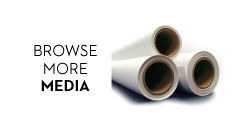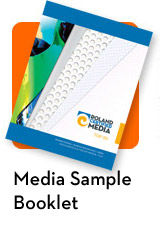HeatSoft™ PLUS ESM-HTM3 Heat Transfer Material
 Roland DG’s premium-quality heat transfer material, HeatSoft PLUS ESM-HTM3, is a thin yet durable inkjet-printable polyurethane media that images beautifully, stretches and weeds easily. Extremely versatile, HeatSoft PLUS ESM-HTM3 makes transferring graphics to a variety of materials, including cotton, polyester, poly-blend, spandex/Lycra® and leather, quick and easy. HeatSoft PLUS ESM-HTM3 helps produce customized apparel and accessories with a soft hand, vibrant color and exceptional detail. Capable of withstanding up to 50 wash cycles, it also offers unsurpassed durability. HeatSoft PLUS HTM3 is easily transferred by lifting the graphic off its backing liner with Roland DG’s HeatSoft PGM-PTM2 heat transfer mask and applying it to the clothing item or accessory. The mask ensures the dimensional stability of this thin, stretchy media during the heat transfer process. HeatSoft Plus ESM-HTM3 heat transfer material is compatible Roland DG’s VersaStudio®, VersaCAMM® SP-i, VersaCAMM® VS-i series and TrueVIS printers.
Roland DG’s premium-quality heat transfer material, HeatSoft PLUS ESM-HTM3, is a thin yet durable inkjet-printable polyurethane media that images beautifully, stretches and weeds easily. Extremely versatile, HeatSoft PLUS ESM-HTM3 makes transferring graphics to a variety of materials, including cotton, polyester, poly-blend, spandex/Lycra® and leather, quick and easy. HeatSoft PLUS ESM-HTM3 helps produce customized apparel and accessories with a soft hand, vibrant color and exceptional detail. Capable of withstanding up to 50 wash cycles, it also offers unsurpassed durability. HeatSoft PLUS HTM3 is easily transferred by lifting the graphic off its backing liner with Roland DG’s HeatSoft PGM-PTM2 heat transfer mask and applying it to the clothing item or accessory. The mask ensures the dimensional stability of this thin, stretchy media during the heat transfer process. HeatSoft Plus ESM-HTM3 heat transfer material is compatible Roland DG’s VersaStudio®, VersaCAMM® SP-i, VersaCAMM® VS-i series and TrueVIS printers.
Specifications
| Total Caliper: | 8 mils (film and liner) |
| Basis Weight: | N/A |
| Whiteness: | N/A |
| Brightness: | N/A |
| Opacity: | 90% |
| Gloss Level: | 71 @1.2: 20° |
| Inkset: | Eco solvent (Eco-Sol MAX, Eco-Sol MAX 2, EJ, TrueVIS) |
| Adhesive: | Thermally activated |
| Backing: | Clear Polyester |
Applications
- Textiles
- Apparel Decoration
- Leather Goods
Available Sizes
54"
30” (actual 29.5”)
20” (actual 19.66”)
Storage and Usage
HeatSoft PLUS ESM-HTM3 Polyurethane Heat Transfer Material should be handled with care to prevent surface contamination that may affect the printable surface of the product. This polyurethane film should be processed and stored in an environment of 65° -75° (18° - 24° C) and 30 to 50% relative humidity (non-condensing) that is clean, relatively dust-free and away from direct sunlight. It is recommended to store this product in its original packaging in a cool dry area until ready for use. If storage conditions are outside the recommended operating ranges, allow the material to acclimate to the production environment for a least 24 to 48 hours before use.

